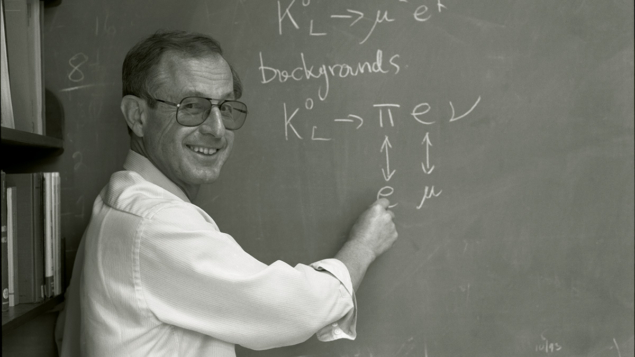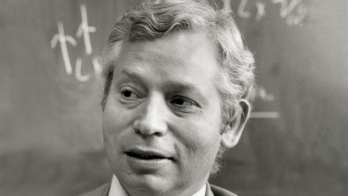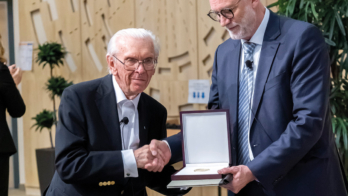
Stanley G Wojcicki, a long-time leader in experimental particle physics, died on 31 May at the age of 86. Stan made a number of seminal contributions to the field, beginning with the discovery of many short-lived particles as a graduate student at Berkeley. He quickly rose to prominence, becoming an expert on K-meson physics, where he made a series of investigations and discoveries that played an important role in understanding the structure of the Standard Model.
Stan hardly had a typical childhood. Born in Warsaw, Poland, his youth was dominated by World War II, which caused great hardships, including the separation of his family for several years, followed by a difficult life under the communist regime. Finally, his mother, brother and he managed to escape to Sweden. There, they were refugees for eight months, before they were finally able to move to the US. Stan’s father remained in Poland, where he was jailed for five years, and never received a visa to rejoin his family.
From a very young age, Stan was an exceptional student who loved and excelled at mathematics. He continued to stand out in school in his new country and gained admission to Harvard University as an undergraduate, majoring in physics. He went on to Berkeley as a graduate student in physics, which is where he and I met and became lifelong friends, colleagues and sometimes collaborators.
Upon receiving his PhD in 1962, Stan spent a year at CERN and Collège de France, Paris (1964–1965). He returned frequently to CERN, including for a period supported through a John Simon Guggenheim Fellowship in 1973–1974. During that year, Stan continued his research on the excited states of hadrons made from combinations of quarks. He continued his close association with CERN, once again as a scientific associate in 1980–1981, and for shorter periods throughout his career.
Stan was appointed assistant professor in the physics department at Stanford in 1966, advanced to full professor in 1974, served as chair from 1982–1985 and stayed on the faculty until his retirement in 2015. He characteristically became interested in the newest and most exciting areas in the field, and was quick to join the design effort for the Superconducting Super Collider (SSC). He served as deputy director of the SSC central design group in Berkeley and was deeply involved in proposing and obtaining approval for the construction of the SSC in Texas. He continued to be active in many aspects of the SSC until it was cancelled by Congress in 1993, and wrote an insightful two-volume history of the project.
After the SSC disappointment, Stan characteristically bounced back to take on a new emerging area of particle physics: neutrino masses and oscillations. He proposed and led the MINOS experiment, a key element of a long-baseline neutrino experiment that sent a beam of neutrinos through a near detector at Fermilab and to a second detector, 735 km away, in a deep mine in Minnesota. MINOS was very important in providing evidence confirming the observations of atmospheric neutrino oscillations from Super-Kamiokande in Japan.
Stan received many honours, including the Pontecorvo Prize in 2011 and the APS Panofsky Prize in 2015 for his neutrino work. He met his wife, Esther, while he was a PhD student at Berkeley. They married in 1961 and had three daughters of whom he was very proud, Susan (CEO of YouTube), Janet (professor of paediatrics at UCSF Medical School) and Anne (founder and CEO of 23andMe). He will be very much missed by his many long-time friends and colleagues.





